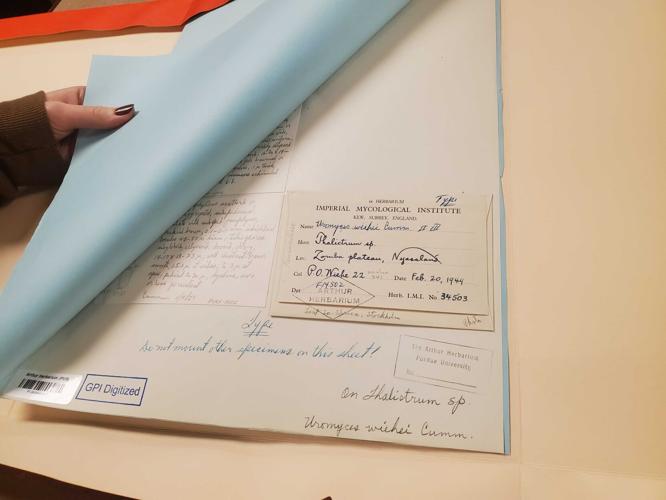I fully appreciate your June 8 article “Can you read this?” and the fact that the dismissal of cursive has led to students suffering from a lack of preparation, with one less tool in their hands.
In my role as curator of over 200,000 specimens of plants, fungi, etc., some of which predate Purdue University, cursive is part of the daily examination and management of these materials. Labels are recorded in magnificent calligraphy and are like individual fingerprints assigned by the collectors to their own curatorial works.
These aesthetics are so synonymous with herbaria collections that recently a colleague, looking for imaged specimens for a presentation, rejected non-cursive specimens as “not looking like they came from an herbarium.”
For newly mounted specimens on herbarium sheets to be deposited in the Herbaria, both the label of their identity and state or country of origin have traditionally been inscribed by hand in cursive, with further information compiled in digital databases, printed and attached to the sheets, along with barcodes for rapid identification. When I recently asked some students to generate new specimen sheets with identities and origins in cursive, they stated that they simply could not accomplish this.
Further, as part of continuing digitalization efforts, we are transcribing the herbarium sheets of older specimens not yet in our digital database. These efforts are in risk of major hurdles in projected, budgeted timelines, due to the assistance needed by student workers to properly replicate records recorded in cursive handwriting. How will these records be interpreted in 50 years, if not digitally transcribed in full before that time? Will it become commonplace for cursive, a skill I learned at the age of 7, to be a prerequisite for herbaria curation?
Again, I thank you for shining a light on the disservice being done to the student body. I only wish that this article was published during the school year and more students had the time to reflect on this deficiency, and perhaps take this as a opportunity to refocus their efforts and reclaim this skill in their academic toolbox.
- Rabern Simmons, curator of fungi in the Purdue University Herbaria in the Department of Botany and Plant Pathology


















(0) comments
Welcome to the discussion.
Log In
Keep it Clean. Please avoid obscene, vulgar, lewd, racist or sexually-oriented language.
PLEASE TURN OFF YOUR CAPS LOCK.
Don't Threaten. Threats of harming another person will not be tolerated.
Be Truthful. Don't knowingly lie about anyone or anything.
Be Nice. No racism, sexism or any sort of -ism that is degrading to another person.
Be Proactive. Use the 'Report' link on each comment to let us know of abusive posts.
Share with Us. We'd love to hear eyewitness accounts, the history behind an article.